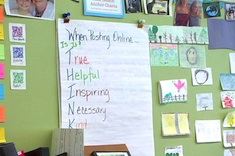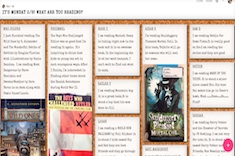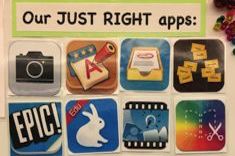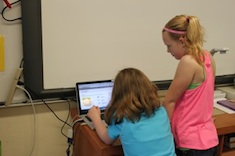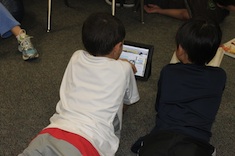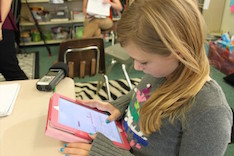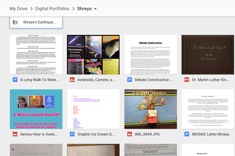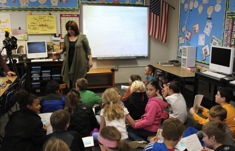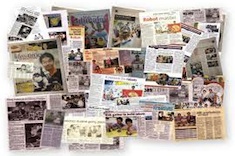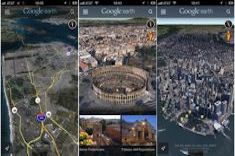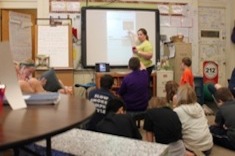Digital Literacy
Thoreau once wrote we are in danger of becoming the "tool of our tools," but it's doubtful he envisioned a day when there would be so much technology hardware and software to distract and empower us at the same time. Teachers who are grappling with iPads, laptops, kid blogs and cellphones in classrooms share their triumphs and struggles here.
Latest Content
The iPad Is 7
Jennifer Schwanke reflects upon how the iPad and other touchscreen devices have changed the way children interact with all texts, even traditional storybooks.
Getting Started with Voice Recorded Responses
Gigi MicAllister gives step-by-step advice on how she set up voice-recorded response as an option in her fourth-grade classroom.
Branding Blogs (Part 3)
Andrea Smith concludes her series on the power of branded student blogs in her fourth-grade classroom.
Branding Blogs (Part 2)
Andrea Smith continues her series on the power of "branding" for improving student blogs. In this installment, students examine mentor blogs and bloggers.
The Craft of Blogging
Franki Sibberson uses a micro-progression of her own draft of a blog post to help her third graders improve their blogging skills.
Branding Blogs (Part 1)
Andrea Smith finds "branding" is a way to improve student blogs. She shares her process of presenting the concept to students in the first installment of a three-part series.
Guidelines for Posting Online
Katherine Sokolowski describes a wall display with guidelines to ensure students are respectful and aware of the pitfalls of posting online.
Padlet Possibilities
Katherine Sokolowski finds that electronic charting of learning with Padlet has almost endless possibilities for use in her fifth-grade classroom.
Tweeting a Favorite Author
Katherine Sokolowski helps one of her fifth-grade students compose a tweet to a favorite author.
Tweets in the High School Classroom
Gretchen Schroeder finds that tweets are a terrific quick assessment tool for analyzing student understanding of everything from nonfiction texts to character development in classic literature.
Jumping into Just-Right Apps
We spend a lot of time in elementary classrooms matching students to “just-right” books. Katrina Edwards uses similar principles to help her first-grade students pick just-right apps. The essay includes a downloadable chart of appropriate literacy apps for young learners.
Tech Anchor Charts
A daunting task for teachers is to help students learn to use new tech tools, as well as understand community standards for each one. Katherine Sokolowski finds tech anchor charts are a great way to provide ongoing support to students as they navigate new software and apps.
Student Writing, Filters, and Social Media
Ruth Ayres explains why filtering is one of the most important concepts writers need to understand in this social media age, and she shares a simple lesson and chart for teaching students how filtering works.
Bringing Writers’ Voices Home with QR Codes
Bitsy Parks has her first-grade students record their writing as part of a regular workshop and assessment routine, and then uses QR codes to share the recordings with families and the larger community.
Using Webcomics in Classrooms
Katherine Sokolowski explains why she uses webcomics in her literacy workshops, and shares an extensive list of her favorite online sources.
“Are We Gonna Watch the Movie?”
Gretchen Schroeder finds her high school students are always eager to see the movies related to the novels they are reading in class. Yet it rarely makes sense to show the entire film. She explains how to choose clips judiciously.
Technology Is Not a Reward
Bill Bass explains why teachers who are still using technology as a reward are far behind their colleagues in integrating computers and applications into workshops.
Figuring Out Social Media Together
Ruth Ayres finds storytelling is at the heart of social media, and describes how teachers and students might work together to find a place for social media in classrooms.
Getting Started with Digital Portfolios
Megan Skogstad shares advice launching digital portfolios.
Launching Student Data Binders
Megan Skogstad shares lots of practical advice for creating and sustaining student data binders.
Digital Literacy Workshop
Maria Caplin has suggestions for making transitions to digital literacy in reading and writing workshops.
Video for Last Days of School
Melanie Meehan encourages teachers to build a video collection of students at work to use with next year’s class.
Using Padlet with Students
Katherine Sokolowski finds Padlet is a great tool for compiling learning and building community.
Using Google Earth to Support Readers
Justin Stygles finds Google Earth is a marvelous tool for helping students research settings in novels.
Webquests with Middle School Students
Megan Ginther revisits a classic internet research project.
Teaching Search Skill Basics to Students
Bill Bass has advice for teaching web-based search skills to students.
Twitter in the Classroom
Katherine Sokolowski and her students find Twitter is an essential element in their fifth-grade reading workshop.
The Power of a Hashtag
Katharine Hale looks at the value of hashtags in helping students harness Twitter in a reading community.
Choosing the Right Tool for Your Message
Julie Johnson has advice on classroom uses of tech resources.
Integrating Short Videos into Minilessons
Katherine Sokolowski gives advice on how to add video to your literacy minilessons.
Browse Content By
Type
Category
- Assessment Tools
- Big Fresh Archives
- Booklists
- Choice Numeracy
- Classroom Design
- Common Core
- Community Building
- Conferring
- Content Literacy
- Digital Literacy
- English Language Learners
- Equity
- Family Relations
- Free Samples
- Guiding Groups
- Leadership
- Literacy Coaches
- Mentor Texts
- Minilessons
- New Teacher Mentors
- Podcasts
- Poetry
- Quote Collections
- Reading Strategies
- Self Care
- Struggling and Striving Learners
- Talking and Listening
- Teacher Study Groups
- Teaching Reading
- Teaching Writing
- Word Study and Vocabulary
Author
- Melissa Quimby
- Nawal Qarooni
- Gwen Blumberg
- Julie Cox
- The Lead Learners
- Hannah Tills
- Josie Stewart
- Ruth Metcalfe
- Mallory Messenger
- Becca Burk
- Jodie Bailey
- Vivian Chen
- Mary Brower
- Tiffany Abbott Fuller
- Stephanie Affinito
- Ruth Ayres
- Leigh Anne Eck
- Heather Fisher
- Shari Frost
- Julie Johnson
- Suzy Kaback
- Gigi McAllister
- Shirl McPhillips
- Melanie Meehan
- Cathy Mere
- Debbie Miller
- Tara Barnett and Kate Mills
- Tammy Mulligan
- Dana Murphy
- Bitsy Parks
- David Pittman
- Brenda Power
- Heather Rader
- Matt Renwick
- Mandy Robek
- Christy Rush-Levine
- Gretchen Schroeder
- Jen Schwanke
- Brian Sepe
- Katherine Sokolowski
- Stella Villalba
- Jennifer Vincent
Grade Level
Choice Literacy Membership
Articles
Get full access to all Choice Literacy article content
Videos
Get full access to all Choice Literacy video content
Courses
Access Choice Literacy course curriculum and training







